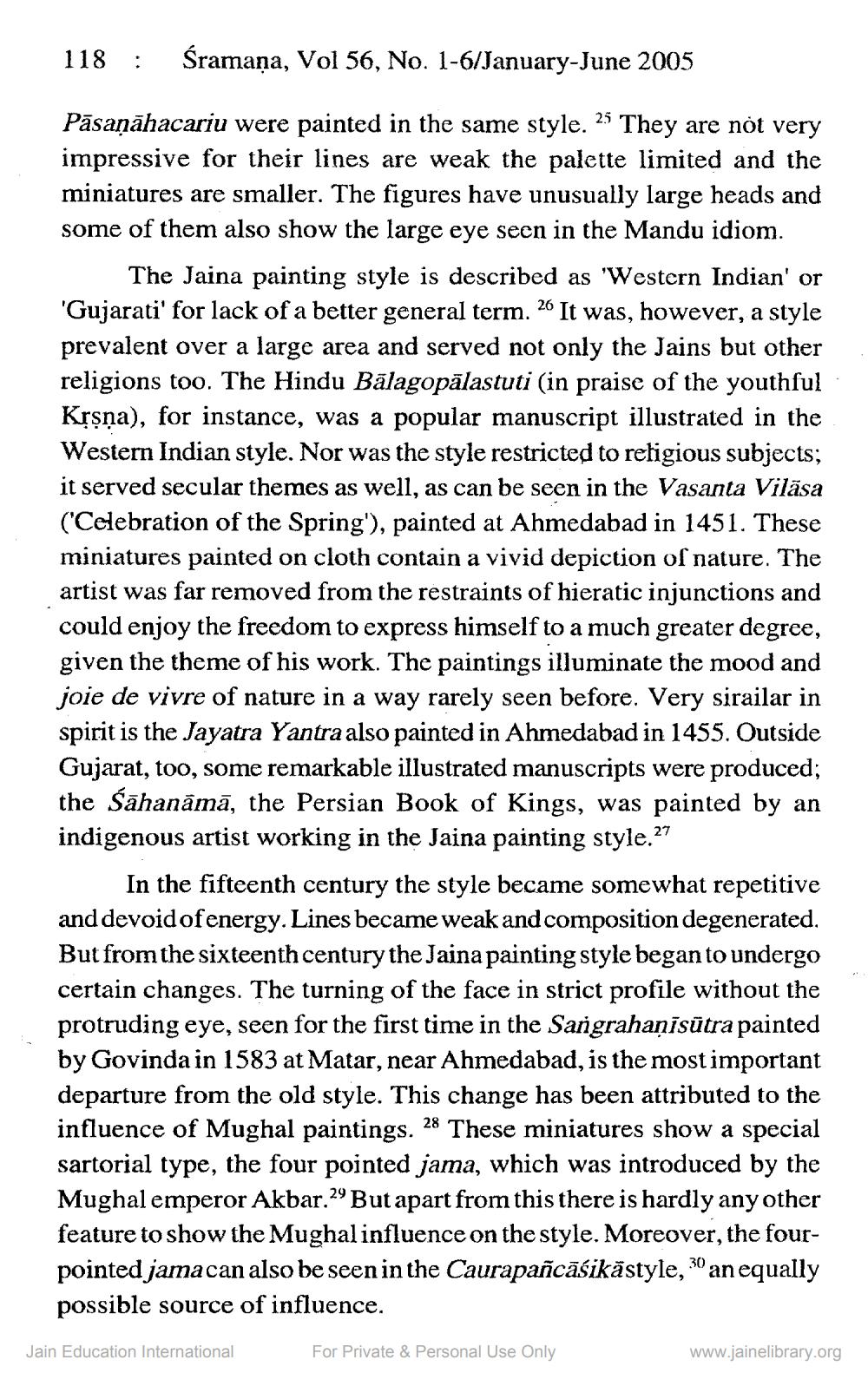________________
118
4. Śramaṇa, Vol 56, No. 1-6/January-June 2005
Pāsaṇāhacariu were painted in the same style. 25 They are not very impressive for their lines are weak the palette limited and the miniatures are smaller. The figures have unusually large heads and some of them also show the large eye seen in the Mandu idiom.
The Jaina painting style is described as 'Western Indian' or 'Gujarati' for lack of a better general term. 26 It was, however, a style prevalent over a large area and served not only the Jains but other religions too. The Hindu Bālagopālastuti (in praise of the youthful Kṛṣṇa), for instance, was a popular manuscript illustrated in the Western Indian style. Nor was the style restricted to religious subjects; it served secular themes as well, as can be seen in the Vasanta Vilāsa ('Celebration of the Spring'), painted at Ahmedabad in 1451. These miniatures painted on cloth contain a vivid depiction of nature. The artist was far removed from the restraints of hieratic injunctions and could enjoy the freedom to express himself to a much greater degree, given the theme of his work. The paintings illuminate the mood and joie de vivre of nature in a way rarely seen before. Very sirailar in spirit is the Jayatra Yantra also painted in Ahmedabad in 1455. Outside Gujarat, too, some remarkable illustrated manuscripts were produced; the Śāhanāmā, the Persian Book of Kings, was painted by an indigenous artist working in the Jaina painting style.27
In the fifteenth century the style became somewhat repetitive and devoid of energy. Lines became weak and composition degenerated. But from the sixteenth century the Jaina painting style began to undergo certain changes. The turning of the face in strict profile without the protruding eye, seen for the first time in the Sangrahaṇīsūtra painted by Govinda in 1583 at Matar, near Ahmedabad, is the most important departure from the old style. This change has been attributed to the influence of Mughal paintings. 28 These miniatures show a special sartorial type, the four pointed jama, which was introduced by the Mughal emperor Akbar.29 But apart from this there is hardly any other feature to show the Mughal influence on the style. Moreover, the fourpointed jamacan also be seen in the Caurapañcāsikästyle, 30 an equally possible source of influence.
For Private & Personal Use Only
Jain Education International
www.jainelibrary.org




